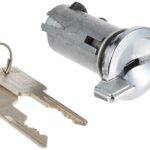
Common Toyota RAV4 Problems: Symptoms, Causes, and Proven Fixes

The Toyota RAV4 stands among the most dependable SUVs on the market—but even the most reliable vehicles face occasional issues. In this detailed guide, we break down the most common Toyota RAV4 problems, their symptoms, root causes, and practical solutions you can apply to keep your vehicle performing like new.
- ⚙️ 1. Transmission Problems
- 🛑 2. Brake System Issues
- ⚡ 3. Electrical System Failures
- 🛢️ 4. Excessive Oil Consumption
- 🛞 5. Suspension and Steering Problems
- 🌡️ 6. Cooling System Failures
- 🚗 7. Power Steering Malfunctions
- 🔋 8. Battery and Charging Problems
- 🔥 9. Engine Performance Issues
- ⚠️ 10. Common Toyota RAV4 Recalls and Reliability Reports
- 📊 Summary Table: Toyota RAV4 Problems, Causes, and Solutions
- ✅ Final Thoughts
⚙️ 1. Transmission Problems
Typical Symptoms
- Transmission slipping or hesitation when accelerating.
- Grinding, clunking, or whining noises during gear shifts.
- Warning lights such as “Check Engine” or “Transmission Fault” on the dashboard.
Likely Causes
- Low or degraded transmission fluid.
- Faulty solenoids or valve body.
- Worn clutch packs or torque converter.
- Software issues in automatic transmission control modules.
Solutions
- Replace transmission fluid and filter at 60,000-mile intervals.
- Conduct a professional scan to check for solenoid or TCM errors.
- Rebuild or replace the valve body if shifting remains erratic.
- Update transmission software (available for some model years).
🛑 2. Brake System Issues
Typical Symptoms
- Squealing or grinding noise during braking.
- Soft or spongy brake pedal feel.
- Pulsation or vibration when pressing the brake pedal.
Likely Causes
- Worn brake pads or warped rotors.
- Air or moisture in the brake lines.
- Leaks in the hydraulic system or brake calipers.
- Faulty ABS sensors or control unit.
Solutions
- Replace brake pads every 25,000–50,000 miles.
- Flush and bleed brake fluid every two years.
- Resurface or replace warped rotors.
- Scan and recalibrate the ABS if warning lights persist.
⚡ 3. Electrical System Failures
Typical Symptoms
- Flickering headlights or interior lights.
- Unresponsive infotainment touchscreen.
- Inoperative power windows or mirrors.
- TPMS or parking sensors failing intermittently.
Likely Causes
- Weak or corroded battery terminals.
- Faulty alternator or voltage regulator.
- Blown fuses or damaged relays.
- Water intrusion in electrical connectors.
Solutions
- Test and replace the battery (especially after 3–5 years).
- Tighten and clean all main ground connections.
- Replace damaged fuses or relays.
- Perform a moisture inspection behind the dashboard and fuse box.
🛢️ 4. Excessive Oil Consumption
Typical Symptoms
- Frequent need to top off engine oil.
- Blue smoke from the exhaust pipe.
- Oil puddles beneath the engine.
- Noticeable oil smell after driving.
Likely Causes
- Worn piston rings or valve seals.
- Failing PCV (Positive Crankcase Ventilation) valve.
- Oil leaks from the valve cover or oil pan gasket.
- Poor-quality or incorrect oil viscosity.
Solutions
- Replace the PCV valve every 60,000 miles.
- Use high-mileage synthetic oil to minimize consumption.
- Replace leaking gaskets and seals.
- Conduct a compression test to assess internal engine wear.
🛞 5. Suspension and Steering Problems
Typical Symptoms
- Clunking or knocking sounds when driving over bumps.
- Steering wheel vibration at highway speeds.
- Uneven tire wear or vehicle pulling to one side.
- “Loose” or unstable steering feel.
Likely Causes
- Worn struts, shocks, or bushings.
- Misaligned wheels or worn ball joints.
- Power steering fluid leaks or pump failure.
- Damaged tie rods or rack-and-pinion system.
Solutions
- Replace shocks and struts every 70,000–100,000 miles.
- Perform alignment and tire balancing annually.
- Inspect power steering pump and fluid levels.
- Replace worn tie rods and perform recalibration if necessary.
🌡️ 6. Cooling System Failures
Typical Symptoms
- Engine overheating or coolant temperature warning light.
- Green, orange, or pink coolant puddles under the vehicle.
- Inefficient cabin heater performance.
- Coolant level dropping frequently.
Likely Causes
- Leaking radiator or cracked hoses.
- Faulty water pump or thermostat.
- Clogged coolant passages or rust buildup.
- Blown head gasket (in severe overheating cases).
Solutions
- Replace the thermostat every 80,000 miles.
- Pressure-test the cooling system to find leaks.
- Flush the radiator every 2 years to prevent corrosion.
- Replace head gasket if compression test shows coolant intrusion.
🚗 7. Power Steering Malfunctions
Typical Symptoms
- Stiff or heavy steering, especially at low speeds.
- Whining or groaning noises while turning.
- Leaking steering fluid beneath the car.
- Steering wheel not returning to center.
Likely Causes
- Low power steering fluid level.
- Leaks from the pump or rack seals.
- Belt slippage or tensioner wear.
- Electronic power steering sensor failure (on newer RAV4s).
Solutions
- Check and top off power steering fluid regularly.
- Replace leaking hoses or pump seals.
- Replace serpentine belt and tensioner if slipping occurs.
- Scan for EPS error codes and recalibrate steering sensors.
🔋 8. Battery and Charging Problems
Typical Symptoms
- Slow engine crank or clicking sound when starting.
- Warning lights: “Battery” or “Charging System.”
- Dim dashboard lights or dead accessories.
Likely Causes
- Aging battery (over 4 years old).
- Alternator failure or corroded wiring.
- Parasitic draw from malfunctioning electronics.
Solutions
- Perform a load test on the battery.
- Check alternator output voltage (should be 13.8–14.5V).
- Repair or replace corroded ground connections.
- Identify and fix parasitic draws using an ammeter.
🔥 9. Engine Performance Issues
Typical Symptoms
- Rough idling or engine misfires.
- Loss of power or poor acceleration.
- Engine knocking or pinging noises.
- Illuminated check engine light (CEL).
Likely Causes
- Clogged fuel injectors or dirty throttle body.
- Faulty spark plugs or ignition coils.
- Failing mass air flow (MAF) or oxygen sensors.
- Fuel pump degradation or low fuel pressure.
Solutions
- Clean throttle body and intake every 30,000 miles.
- Replace spark plugs every 60,000 miles.
- Clean or replace MAF and O2 sensors as needed.
- Replace the fuel filter and inspect pump operation.
⚠️ 10. Common Toyota RAV4 Recalls and Reliability Reports
Recent Recall Highlights
- 2019 Recall: Brake system defect increasing stopping distance.
- 2020 Recall: Power steering fluid leak that could reduce steering control.
- 2021 Recall: Cooling system issue causing potential engine overheating.
Reliability Insights
- J.D. Power: RAV4 ranks above average overall, but transmission and electrical issues remain recurrent complaints.
- Consumer Reports: Notes occasional infotainment malfunctions and higher oil consumption in 2019–2021 models.
- NHTSA: Lists braking and steering issues among the most common customer complaints.
📊 Summary Table: Toyota RAV4 Problems, Causes, and Solutions
| Problem | Common Causes | Effective Solutions |
|---|---|---|
| Transmission Issues | Fluid neglect, worn components, faulty solenoids | Replace fluid, rebuild valve body, reprogram TCM |
| Brake System | Worn pads, warped rotors, leaks | Replace pads/rotors, flush system |
| Electrical Failures | Weak battery, corroded terminals, bad fuses | Replace battery, clean terminals, check relays |
| Oil Consumption | Worn seals, PCV failure, leaks | Replace PCV valve, seals, use high-mileage oil |
| Suspension Issues | Worn shocks, misalignment | Replace struts, perform alignment |
| Cooling System | Leaks, faulty thermostat | Flush radiator, replace thermostat |
| Steering Issues | Low fluid, pump leak | Refill fluid, replace pump, recalibrate EPS |
| Battery/Charging | Dead battery, alternator issues | Replace battery/alternator, fix wiring |
| Engine Performance | Dirty injectors, faulty coils | Clean injectors, replace coils/plugs |
✅ Final Thoughts
The Toyota RAV4 remains a standout in dependability, but understanding its weak points helps prevent major repairs. With regular fluid changes, sensor inspections, and software updates, you can easily extend your RAV4’s lifespan beyond 200,000 miles.
You may be interested in reading Toyota RAV4 Key Won’t Turn: The Definitive Guide to Diagnosis, Fixes & Prevention
Toyota RAV4 Key Won’t Turn: The Definitive Guide to Diagnosis, Fixes & PreventionFAQs
1. What year RAV4 has the most transmission issues?
The 2019 and 2020 RAV4 models reported the highest number of transmission-related complaints.
2. Why does my RAV4 burn oil quickly?
High oil consumption typically stems from worn piston rings, valve seals, or a clogged PCV valve.
 Toyota RAV4 Key Won’t Turn: The Definitive Guide to Diagnosis, Fixes & Prevention
Toyota RAV4 Key Won’t Turn: The Definitive Guide to Diagnosis, Fixes & Prevention How to Unlock a Toyota RAV4 Steering Wheel: Step-by-Step Fix Guide
How to Unlock a Toyota RAV4 Steering Wheel: Step-by-Step Fix Guide3. How often should I service my RAV4’s transmission?
Replace transmission fluid every 60,000 miles or sooner under heavy driving conditions.
4. What are the signs of a failing RAV4 water pump?
Coolant leaks, engine overheating, and whining noises from the engine bay.
 Toyota RAV4 Key Won’t Turn: The Definitive Guide to Diagnosis, Fixes & Prevention
Toyota RAV4 Key Won’t Turn: The Definitive Guide to Diagnosis, Fixes & Prevention How to Unlock a Toyota RAV4 Steering Wheel: Step-by-Step Fix Guide
How to Unlock a Toyota RAV4 Steering Wheel: Step-by-Step Fix Guide Toyota RAV4 Screen Not Working — Complete Troubleshooting & Fix Guide (2025)
Toyota RAV4 Screen Not Working — Complete Troubleshooting & Fix Guide (2025)5. Is the Toyota RAV4 still reliable?
Yes—when maintained properly, it remains one of the most durable compact SUVs, capable of exceeding 250,000 miles with consistent care.
If you want to know other articles similar to Common Toyota RAV4 Problems: Symptoms, Causes, and Proven Fixes you can visit the category Common Problems.
Deja una respuesta






More content of your interest